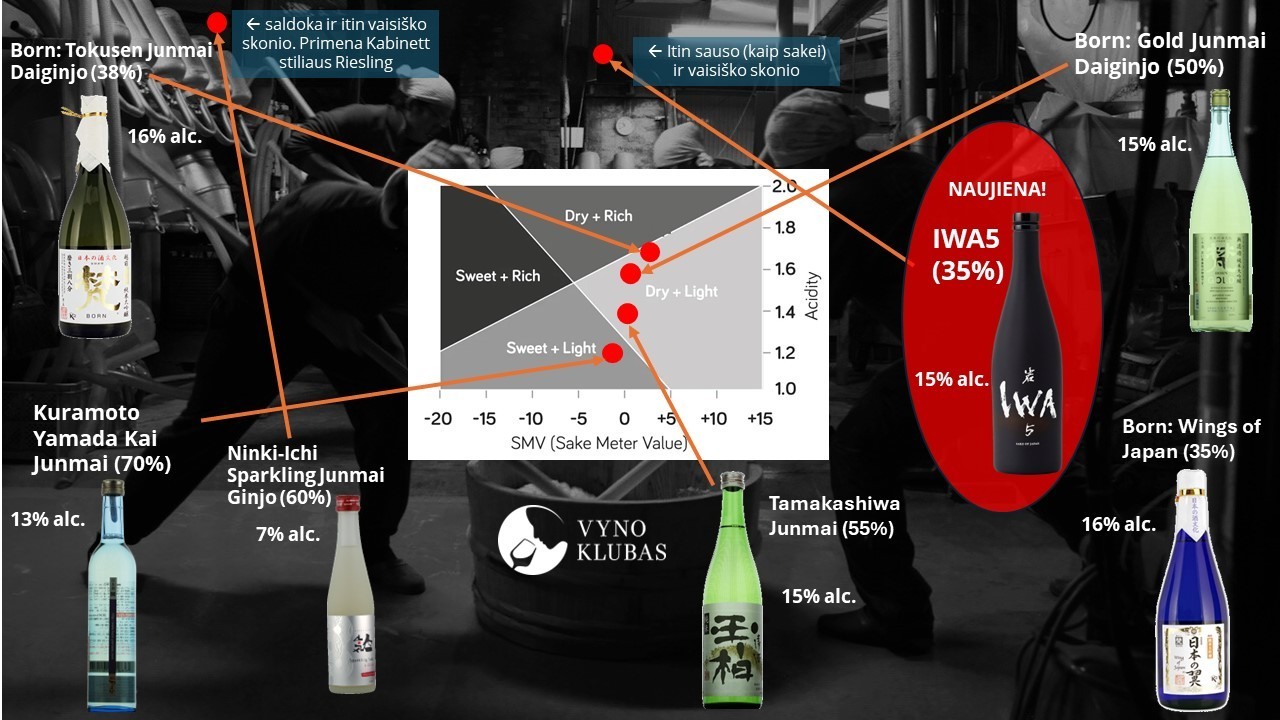Vilnius
- Stumbrų g. 15, Vilnius
- +370 5 213 8431
- [email protected]
- I-V 10:00 - 20:00 VI 10:00 - 18:00
- Rodyti žemėlapyje
Klaipėda
- Liepų g. 20, Klaipėda
- +370 46219675
- [email protected]
- I-V 11:00 - 19:00 VI 11:00 - 17:00
- Rodyti žemėlapyje
1–10 of 10
Sake is a traditional Japanese drink made by fermenting rice with koji mould.
If you want to know more about the different types of sake and the peculiarities of sake production, we suggest you read the article about sake written by our expert Petras Jarašūnas in Vino žurnalas.
And below we share the same flavour scale and how the drinks correlate with it from our range.
Read moreSake is a traditional Japanese drink made by fermenting rice with koji mould.
If you want to know more about the different types of sake and the peculiarities of sake production, we suggest you read the article about sake written by our expert Petras Jarašūnas in Vino žurnalas.
And below we share the same flavour scale and how the drinks correlate with it from our range.
One of the main indicators used by sake producers and sellers to describe the taste of sake is the sake taste scale (sake value meter, or nihonshudo in Japanese), which describes the taste of sake on a dry-sweet continuum. A rating of '0' indicates that the sake should be neither dry nor sweet - neutral, like water. The lower the rating below zero, the sweeter the sake, the higher the rating above zero, the drier.
This rating, combined with the sake's acid content, which allows it to be positioned on a scale of lightness to richness, helps to categorise all sake into four different styles:
- dry and rich;
- dry and light;
- sweet and light;
- sweet and rich;
In the diagram you can see which styles we can classify the sake in our range.
